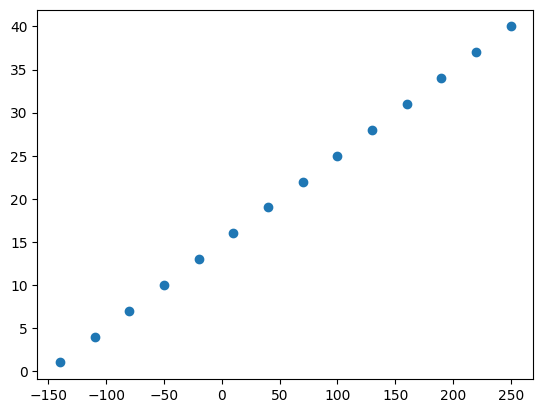
See also:
- Fun, fun, tensors: Tensor Constants, Variables and Attributes, Tensor Indexing, Expanding and Manipulations, Matrix multiplications, Squeeze, One-hot and Numpy
- Tensorflow 2 - Neural Network Regression: Building a Regression Model, Model Evaluation, Model Optimization, Working with a "Real" Dataset, Feature Scaling
- Tensorflow 2 - Neural Network Classification: Non-linear Data and Activation Functions, Model Evaluation and Performance Improvement, Multiclass Classification Problems
- Tensorflow 2 - Convolutional Neural Networks: Binary Image Classification, Multiclass Image Classification
- Tensorflow 2 - Transfer Learning: Feature Extraction, Fine-Tuning, Scaling
- Tensorflow 2 - Unsupervised Learning: Autoencoder Feature Detection, Autoencoder Super-Resolution, Generative Adverserial Networks
Tensorflow Neural Network Regression
Using Tensorflow to predict a numerical variable based on other combination of variables.
import tensorflow as tf
# print(tf.__version__)
# 2.11.0
from tensorflow.keras import Sequential, layers, optimizers
import numpy as np
import matplotlib.pyplot as plt
Create a Dataset
## create features
X = np.array([-140., -110., -80., -50., -20., 10., 40., 70., 100., 130., 160., 190., 220., 250,])
## create labels
y = np.array([1., 4., 7., 10., 13., 16., 19., 22., 25., 28., 31., 34., 37., 40,])
## visualize dataset
plt.scatter(X, y)
plt.show

Input and Output Shapes
# create tensors from np arrays
X = tf.cast(tf.constant(X), dtype=tf.float32)
y = tf.cast(tf.constant(y), dtype=tf.float32)
# test shape
input_shape = X.shape
output_shape = y.shape
input_shape, output_shape
## (TensorShape([8]), TensorShape([8]))
Building the Model
# set random seed
tf.random.set_seed(42)
# build a sequential model with Keras
model = Sequential([
layers.Dense(1)
])
# compile the model
model.compile(
loss="mae",
optimizer="sgd",
metrics=["mae"])
# model training
## error message: "Input 0 of layer "dense_3" is incompatible with the layer: expected min_ndim=2, found ndim=1. Full shape received: (None,)"
# => needed to expand input shape
model.fit(tf.expand_dims(X, axis=-1), y, epochs=99)
## Epoch 99/99
## 1/1 [==============================] - 0s 4ms/step - loss: 14.8669 - mae: 14.8669
Making Predictions
model.predict([70.])
# a X value of 100 would correspond to a y value of 25.0
# with an mae: 17.4613 we can expect to be around 17.5 points of with our prediction:
## array([[29.203451]], dtype=float32)
# we get 29.2 instead of the expected 25.0
Improving the Model
- Creation: add more layers / change activation function / prevent overfitting with dropouts
- Compilation: change optimization function / adjusting the learning rate
- Fitting: add more epochs / add more data / training-testing split validation
# train / test split
X_Split = np.array_split(X,2)
X_train = tf.cast(tf.constant(X_Split[0]), dtype=tf.float32)
x_test = tf.cast(tf.constant(X_Split[1]), dtype=tf.float32)
Y_Split = np.array_split(y,2)
Y_train = tf.cast(tf.constant(Y_Split[0]), dtype=tf.float32)
y_test = tf.cast(tf.constant(Y_Split[1]), dtype=tf.float32)
X_train.shape, x_test.shape
# set random seed
tf.random.set_seed(42)
# build a sequential model with Keras
model_improved = Sequential([
layers.Dense(128, activation="relu"),
layers.Dense(128, activation="relu"),
layers.Dropout(.2),
layers.Dense(64, activation="relu"),
layers.Dense(1)
])
# compile the model
model_improved.compile(
loss="mae",
optimizer=optimizers.Adam(learning_rate=0.01),
metrics=["mae"])
# model training
model_improved.fit(tf.expand_dims(X_train, axis=-1), Y_Split, validation_data=(x_test, y_test), epochs=99)
# Epoch 99/99
# 1/1 [==============================] - 0s 27ms/step - loss: 4.0467 - mae: 4.0467 - val_loss: 2.8862 - val_mae: 2.8862
Making Predictions
model_improved.predict([160.])
# expected y=31 for X value of 160 and got:
## array([[28.041351]], dtype=float32)